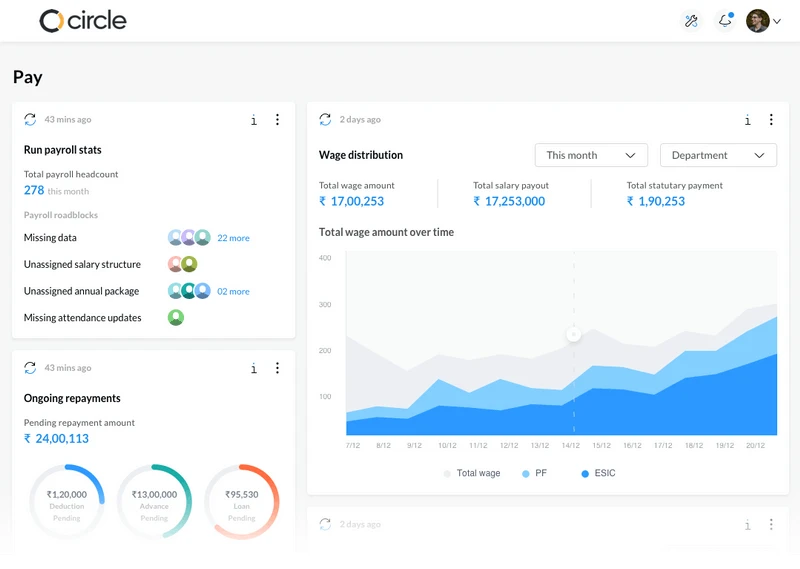Succession planning in business is a technique used by organizations to transfer leadership and key roles to another person or group of employees. By creating a succession plan, firms can remain productive and unaffected when key personnel leaves for other positions, retire or pass away.
Additionally, it might serve as a liquidity event that makes it possible to give growing employees ownership in a going firm. Planning for succession is a smart method for firms to make sure they are ready to develop all employees, not just those in management or executive positions.
What Is the Succession Planning Process?
Succession planning is a backup plan that happens frequently. Instead, it should be reviewed and changed annually or as necessary for the firm as a whole. As a result, it assesses the abilities of each leader, identifies potential replacements both inside and outside the organization, and trains internal replacements beforehand.
The succession planning process, which has an impact on owners, workers, and shareholders, is often overseen by the board of directors in addition to the CEO in major corporations. A bigger company might train mid-level workers to eventually take over higher-level key roles. Raising the next generation to succeed in the organization is a frequent method of succession planning in family-owned and small enterprises.
Succession planning should be examined and modified every year or as often as is essential for the company as a whole. It, therefore, evaluates each leader’s skills, identifies possible successors both inside and outside the organization, and develops internal successors, so they are prepared to take over. Identifying critical positions in an organization, identifying successors, creating the talent pool, scheduling a succession plan, identifying internal potential, listing skills and competencies, etc, are some of the key features of succession planning.
Also Read: Guide on Payroll Software
Process Takes Time and Effort
The objective of recruitment, or proper hiring, is to select potential candidates who will be able to advance in the organization’s ranks in the future. For instance, a seasoned employee from another business might be courted and prepared for a more senior role.
The development of skills, understanding of the business, and certifications are all included in the training. Employees may shadow various positions or jobs in all the major divisions as part of their training.
The person might broaden their horizons and gain a detailed understanding of the firm through this procedure. Additionally, the cross-training approach can assist in identifying staff members who are not capable of acquiring the many skill sets required to run the business.
Businesses might want to have multiple strong succession plans. If key people need to be replaced instantly, a succession plan is put in place as a contingency measure. On the other side, with a long-term succession plan, businesses looking for leadership role changes get help to swiftly manage the situation.
Benefits Of Succession Planning In Business
Having a defined succession planning in business has many benefits for both businesses and employees:
- Employee empowerment and job happiness can increase when they are aware of the possibility of promotion and even ownership.
- Career development for employees is provided when there is a plan for forthcoming possibilities.
- Because management is committed to succession planning, managers will coach staff members to transfer knowledge and skills.
- The value of employees is better tracked by management so that openings may be filled internally as they occur.
- Employees and management are better equipped to communicate about the company’s beliefs and vision.
- When there is a large-scale outflow of workers into retirement, a new generation of leaders is required.
- Shareholders of publicly traded companies benefit from effective succession planning, particularly when the incoming CEO is already actively engaged in business operations and is well-regarded years before the outgoing CEO departs.
- With a clear succession plan, investors won’t be able to manipulate the stocks of the company when the CEO vacates the position.
- Planning for succession can help develop the next generation of leaders, giving shareholders who wish to sell their shares a way out.
Also Read: HRMS Guide
Different Types Of Succession Planning In Business
- Succession Planning On Diversity
The degree to which a company is inclusive, whether it be a small firm or a major corporation, is one of the key factors in determining its success. Businesses have started recognizing the need for diversity for profitability and competitiveness to prevent instability due to key people. In addition to raising staff morale, it also tries to diversify the talent pool and combat bias.
But how do businesses accomplish this? This calls for the implementation of well-thought-out succession planning strategies including diverse hiring, styles of leadership, and life experiences. The strategy should also include removing any internal obstacles that may exist for staff members at all levels and ensuring a healthy work environment.
This only works if succession planning is implemented sincerely rather than to improve corporate reputations.
- Succession Planning On Staffing Needs
The object of the succession planning program is to form a talent pipeline for future leaders who might continue operations with little to no interference when inevitable personnel changes occur.
Effective succession planning identifies potential workforce gaps and develops long-term objectives and management plans to fill them, including through leadership development. Succession planning is generally driven by HR departments, which usually gets backed by top leadership and other stakeholders who are essential for success. Replacement planning is another name for succession planning.
- Leadership Succession Planning And Retention
Having a succession plan in place for important leadership positions at your firm, such as the CEO, COO, CFO, etc., ensures that operations can continue even in the event of an unanticipated loss at the top of the hierarchy.
The most effective succession planning in business prioritizes the training of new leaders, which needs to inspire a sense of value and challenge in the workers chosen to take their places. There is no doubt that those being prepared for key positions should be aware of the succession strategy. However, you must first inquire about telling your staff that they are in line to succeed the current CFO.
From this point, you can determine whether your succession plan aligns with his or her goals. You’ll need to find someone else if it doesn’t. You shouldn’t try to persuade workers to accept positions they don’t want. If they are unhappy, it’s unlikely that they will continue with it over the long run. However, when there is alignment, you are in the ideal position to challenge and inspire people to remain on board and advance with your business organization.
A significant proportion of the intellectual property and crucial, unrecordable details are lost when a top leader departs. To ensure business success, there must be a continuous succession plan. Members of the senior leadership team should actively suggest ways to train their successors. They ought to point up any potential areas of need for their replacements.
They ought to devote time to coaching these workers and educating them on the particular difficulties they will experience. To assist them in understanding how decisions are made, leaders should involve their successors in everyday projects.
The existing leadership team must provide their future leaders with guidance on how to successfully navigate your particular corporate culture.
- Staff Planning And Retention
Even if the majority of your workers may not be top leaders, everyone has to be pushed and given a chance to grow. It might be beneficial for your entire organization to be prepared for openings in middle and lower management positions. These include sales, administration, technology, and manufacturing.
You must actively track and develop the abilities and talents of your employees for an effective succession plan. Depending on the size of your business, this might easily grow to be a significant task. However, you’ll find it much simpler to inspire and promote from within if you use the appropriate succession planning processes and tools.
Also Read: Role of HR Manager
The Future Of Succession Planning In Business
Internal talent development is a crucial element of succession planning. It is crucial to know the ways to maintain the engagement and motivation of prospective candidates for succession planning.
A succession plan must highlight chances for advancement and push your staff to go farther. This results in the staff being more optimistic about their future at your business. They’re, therefore more likely to remain for a long time.
Conclusion
You must include career paths in your succession plan for your mid- and entry-level high-potential employees. Career tracks demonstrate to staff members your concern for their professional aspirations and want to assist them in locating advancement prospects inside your organization. This may strengthen their retention and motivation.
Naturally, there must be follow-through for succession planning in business and career tracks to genuinely help with retention. You must give skilled employees a way to develop, whether it’s through added duties or promotion. They will believe you are making only hollow promises if you don’t. They’ll lose faith that there is indeed room for growth, which can result in attrition. The success of your business organizations depends greatly on the development of your staff.
What are your thoughts on succession planning? Let us know in the comments below.
Additionally, if you’re looking out for tool to manage your HR check out sumHR the all in one HR Software & Payroll Software. Book a demo here








